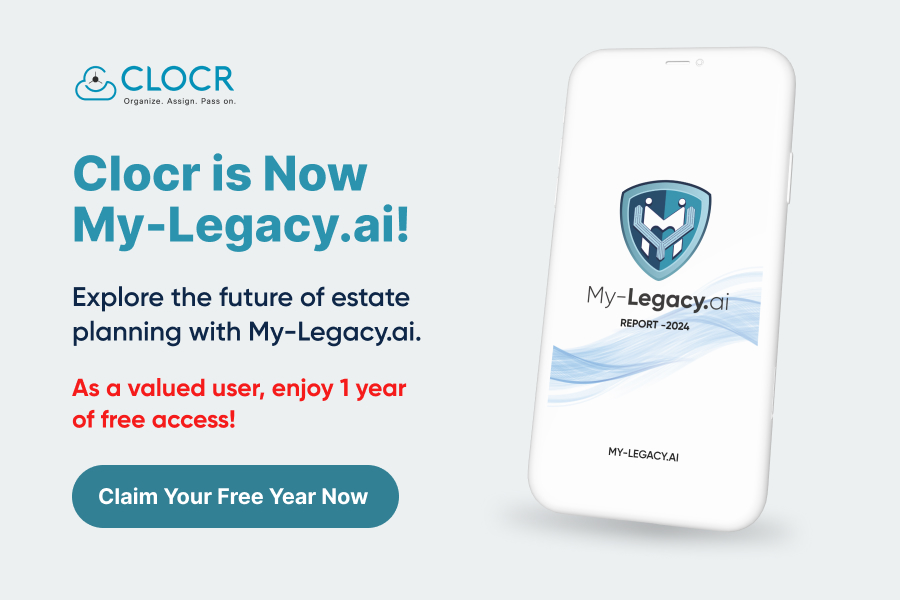Life expectancy rates continue to rise with medical advancements. But even after all this progress, more and more people are thinking about their mortality and what will happen to their digital legacy after death.
A Digital legacy includes “the digital property, information, and data an individual acquires during their lifetime.” This can include everything you have online access to, from social media accounts to online banking information and so on.
For many people, the digital legacy is as important to them as the traditional legacy. A study arranged by Intel found that 84% of people aged 18-24 believe that their digital legacy is more important.
As we enter the digital age, more and more of our lives become online. From how we work and communicate to how we consume media and entertainment, it’s clear that the Internet is here to stay. But what happens to our online presence when we die? Most of us want to ensure that our values and memories are passed on to our children and future generations. But How can we accomplish that?
This article explores three ways to Pass on values and memories via digital legacy. From creating a social media will to writing a digital memoir, there are many ways to leave a lasting legacy.
Overview: Passing on your values and memories
As we get old, we often start to think about our legacy – what we want to leave behind for future generations. For many of us, this means passing on our values and memories.
Values are the things that we believe are important in life. They guide our actions and enable us to make decisions. On the other hand, memories are the stories of our lives that we want to remember and share.
Passing on our values and memories is a way of ensuring that our legacy lives on. It helps to keep our loved ones connected to us, even after we’re gone.
The digital world is transforming as we grow old, changing our lives. We have more ways to connect with people and share memories and values. Technologies such as social media, smartphones, and wearable devices are changing the way we interact with one another.
What happens when we die? How can you ensure that your values and memories are passed on to those you love after you die? To achieve this few steps can be taken. One of them is Legacy Planning. A Legacy planning checklist includes digital legacy after death, end-of-life planning documents, or creating a will or trust.
What is digital legacy?
Your Digital legacy can be thought of as your identity that you’ve built up over time on the Internet, including any email, social media, recreational or subscription accounts, etc. made over the Internet. The Internet is likely to not just be about our personal lives. We will share more aspects of our “digital legacy” by keeping in touch with people we love and cherish; who are no longer here.
Digital legacy can further be classified into two categories, which are digital assets( anything you have purchased or consumed digitally over the years, e.g., e-books, podcasts, and similar stuff) and digital presence ( it is the identity you have curated online over time through social media activities).
In this case, a few examples will suffice of what a digital legacy consists of:
- Social media accounts (Twitter, Instagram, Snapchat, etc.)
- Email accounts
- Contributions you make to online communities
- Financial investment accounts
- Streaming services
- Website domains and blogs
Your Google Drive alone could be a treasure box of photographs and documents. As you might imagine, digital legacy after death is an earnest yet significant undertaking.
The reason why it’s utmost necessary to give special attention to your digital assets and legacy is because your family cannot legally gain access to your accounts after your demise. If something happens to you, and you don’t have a Digital Estate Plan in place, then your family will not be able to access important information regarding your online accounts.
By including a digital estate plan in your Legacy planning documents, typically in the Will, you’re giving authorization to a loved one to access your online accounts and assets. You’ll need to include instructions on accessing usernames and passwords and what you want to do with your accounts.
3 Ways to pass on your values and memories

Plan Your Digital Legacy to Suit your Values
By preparing a Legacy planning checklist, you can jot down details and values you require to pass on to your cherished ones. Your digital legacy is a representation of you and your values. It is what people know about you after you pass away.
It’s essential to plan your digital legacy to suit the values that are important to you. Considering the following checklist will help you do just that:
- What are the values and beliefs that are most important to me?
- How will I want my friends and family members to remember me?
- What do I want my children, grandchildren, nieces, nephews, or future generations to know about me?
- How would I like my name and likeness used in the future?
Say Goodbye with a Legacy Letter
One of the oldest forms of communication is a letter. It is a very personal and private expression of thoughts. Letters share a person’s most intimate feelings and emotions with someone they trust most, who understands their complaints.
A Legacy Letter is a letter that you write to your family, friends, and loved ones to summarize what you want them to know about your life and wishes. For many people, this letter will be the only thing they leave behind in their digital legacy throughout their lives. This letter can help you to avoid confusion or hurt feelings among those left behind after your death. It can also Pass on values such as love, courage, hope, or faith.
A Legacy Letter should never be seen as a replacement for executing the last will but rather an addition to the legacy you have already created through your actions and relationships with others.
Use a Digital Time Capsule
Creating a time capsule is an age-old tradition that captures our past, present, and future within its hidden contents. For example, the poet Victor Hugo buried his documents to preserve the French Revolution. He wanted to encapsulate the nation’s history within a temporary container.
A digital time capsule is a great way to preserve memories and keep them safe for future generations. You can create a digital time capsule using any device that takes pictures and videos, including smartphones, tablets, cameras, and camcorders. The idea behind the digital time capsule is to leave messages for future generations. Messages can be about anything – from personal values to bedtime stories.
This project is perfect for anyone who wants to document their life and share it with family, friends, and future generations.
Conclusion
There are many ways to pass on your values and memories to future generations. You can write a letter to your children or grandchildren, record a video message, or create a website or blog. Consider planning your legacy that will include your authentic essence and memorable moments.
However, creating a digital legacy is one of the best ways to preserve your values and memories. Clocr provides all the necessary tools to create a Digital legacy, including end of life planning documents and the ability to nominate beneficiaries. Even after you’re gone, your family will have something to cherish. In this way, you will have peace of mind knowing that your digital legacy is protected and will be accessible to your loved ones in the event of a need. Get your Digital legacy started today!




